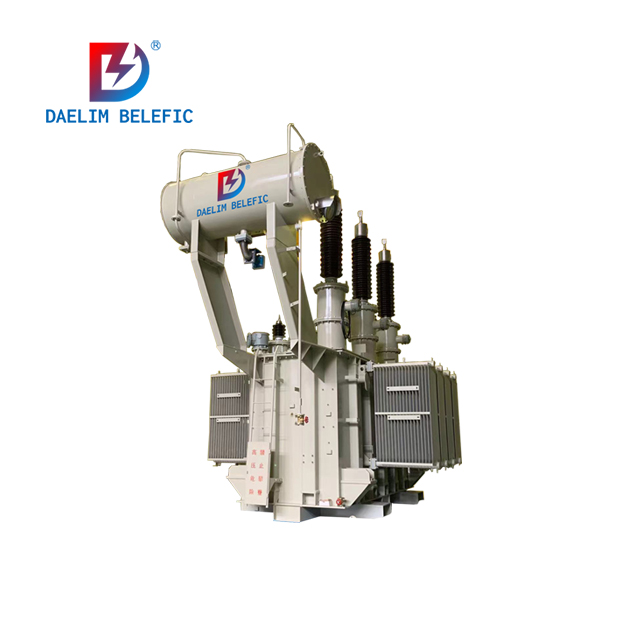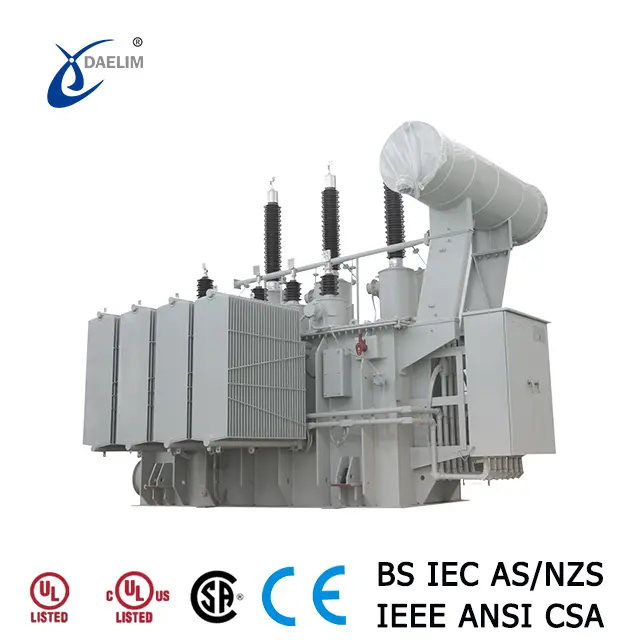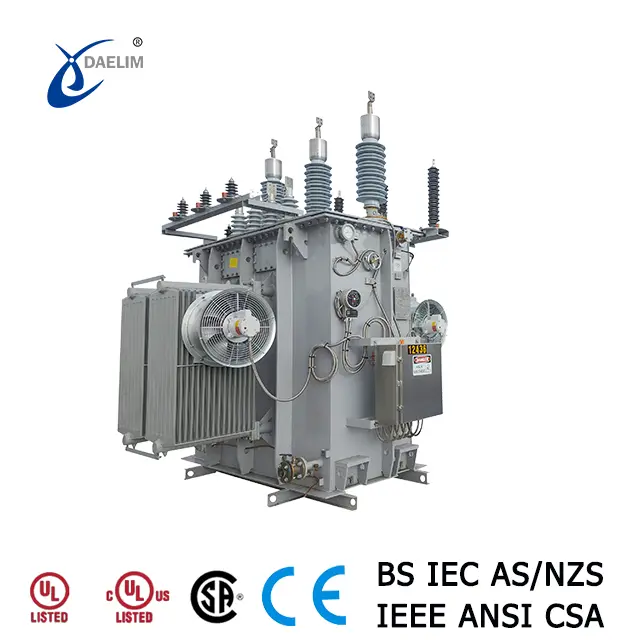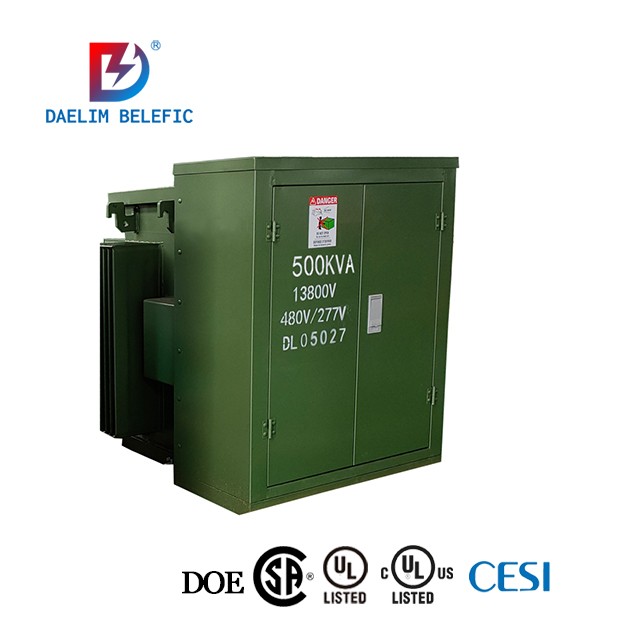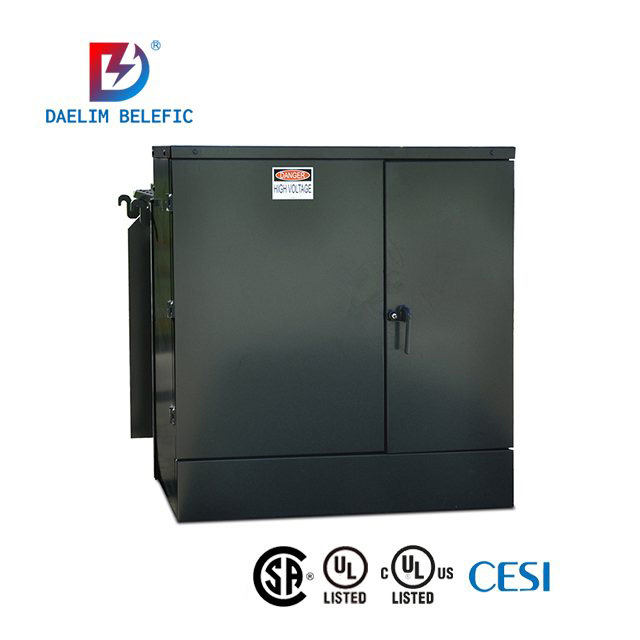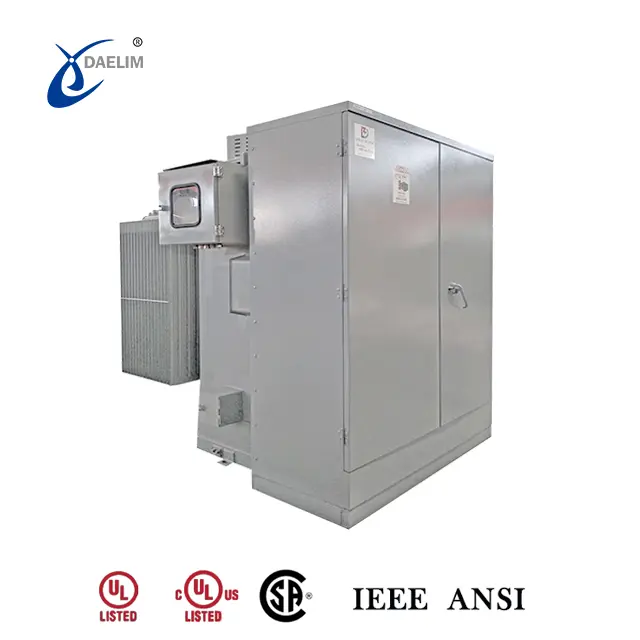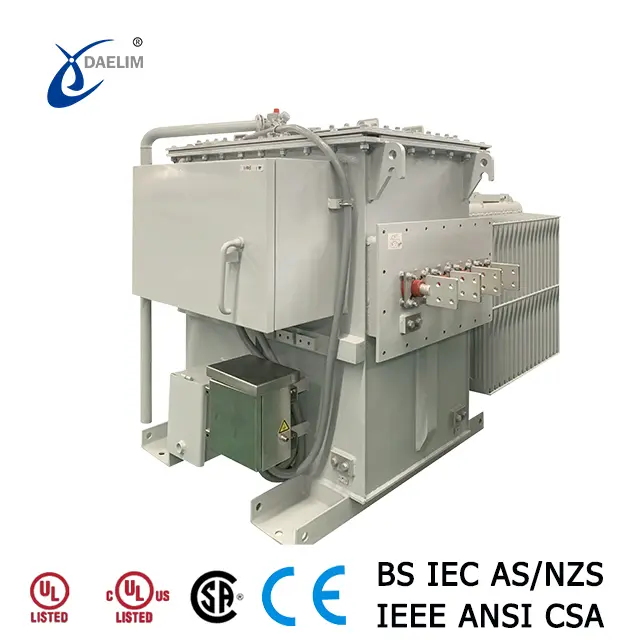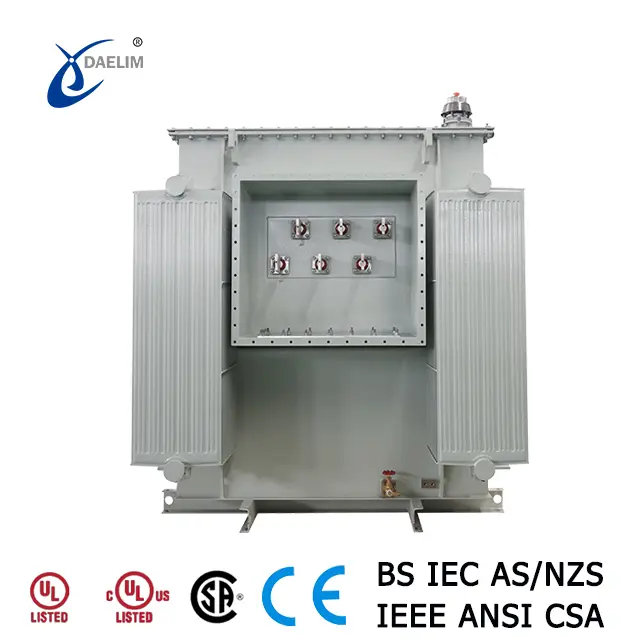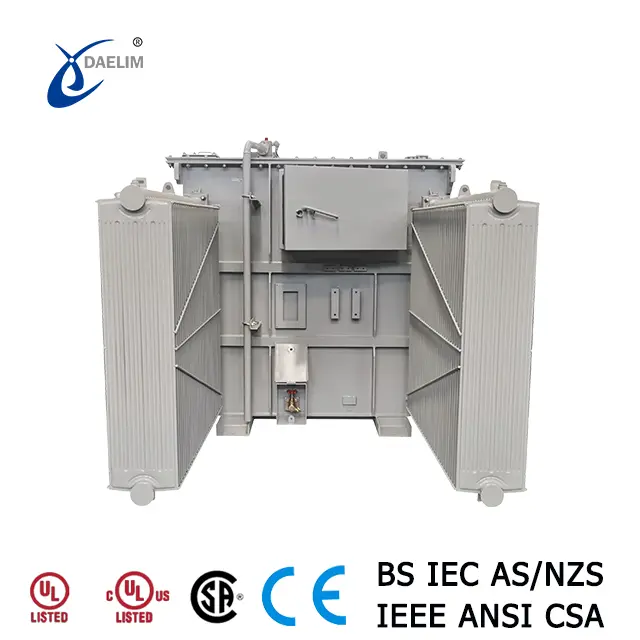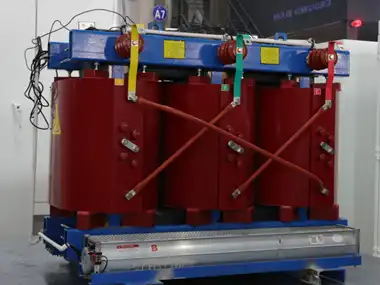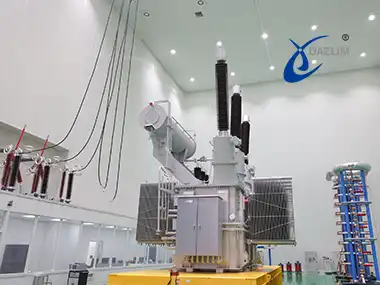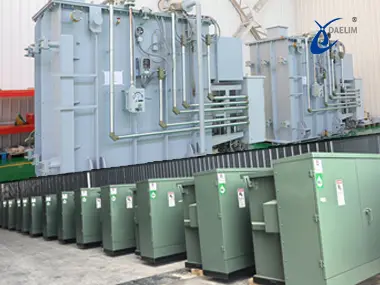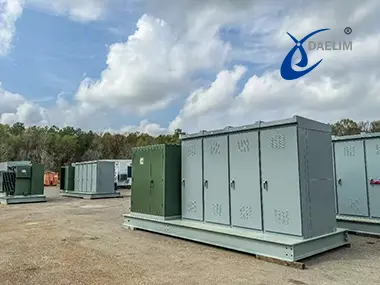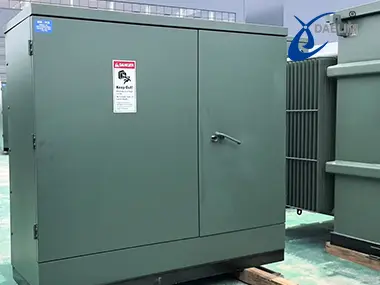Voltage Regulation of Transformer

The only function of an Electric Transformer is to take input from the electricity grid station or electricity generating power plants and then regulate it in order to deliver safe and reliable electricity to the consumers. This is where the voltage regulation of the transformer function came into work.
The electrical transformer voltage regulation helps control fluctuation of electrical voltage between the supply and the consumption because any fluctuation in the system means inefficiency of the electrical equipment, the excessive power losses and even damage to the sensitive electrical devices connected at the consumption end.
So our article is all about understanding the voltage regulation of Transformer and understanding how a proper voltage regulation ensures enhanced power quality efficiency in the Electricity Distribution and consumption system and the reliability of the electricity distribution and consumption network.
Contact Daelim TransformerWhat is Voltage Regulation in a Transformer?
Define Voltage Regulation of Transformer
Let's now understand what the voltage regulation means for an Electrical Transformer. The electrical voltage regulation of a transformer is the percentage change of the electrical voltage, specifically the secondary voltage of the Electrical Transformer when the transformer is from no load condition to a full load condition while that Electrical Transformer is getting a consistent and constant input voltage.
Let’s explain what this percentage change of electrical voltage means, when the Electrical Transformer is in no load condition then there is no voltage being drawn from the Electrical Transformer but as soon as the transformer is connected to a load then the Transformers start to provides a specific voltage to the load attached and that is called full load condition.
Now Based on the factors mentioned above this voltage that is being drawn from the Transformer can fluctuate and thus needs proper regulation to deliver a safe and reliable supply of electricity to the electrical load. This is where the Transformer voltage regulation came into play.
For a transformer to be categorised or considered as a good Transformer in terms of voltage regulation it should offer minimum drop in its voltage supply under all types of load condition and it should ensure a stable and reliable output for all types of electrical loads.
However an electrical transformer can be labelled as a poor voltage regulating transformer, if there is a significant drop in the output voltage of the electrical transformer under extreme load conditions or during extreme environment conditions surrounding the transformer and if the transformer delivers an unstable supply of electricity and offers inefficient performance.
You may enjoy: What Is An NLTC Transformer and How Does It Work?
Key Factors Affecting Voltage Fluctuations in Transformers
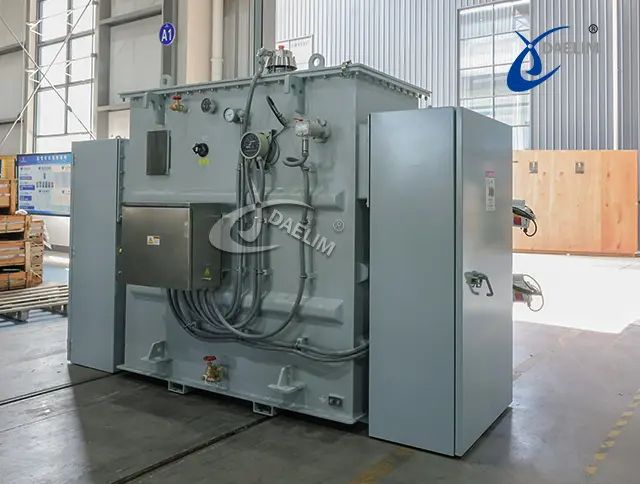 There are four different factors that can influence the voltage requirement for a transformer thus producing a voltage fluctuation even during a normal operating condition.
There are four different factors that can influence the voltage requirement for a transformer thus producing a voltage fluctuation even during a normal operating condition.
- Load variation is the first factor in voltage fluctuation because the entire working of the transformer is to provide the sufficient voltage to the attached electrical load. so if the load requirement changes frequently then it can easily cause voltage fluctuation.
- Second factor is the quality of the transformer winding. If the transformer winding is not of good quality then it can cause high resistance depending on the operating conditions thus can easily cause voltage fluctuation due to fluctuating resistance of Transformer winding.
- There is a proper part in an Electrical Transformer called tap changer that is used to control the output voltage of the electrical transformer and if that tap changer is not working properly or has improper setting then it can very easily cause voltage fluctuation in the electrical transformer.
- The final factors that influence the voltage fluctuation is the quality distribution system. The distribution system can produce fluctuating load due to the number of reasons like line losses or damage in the wires or the poor quality materials used in the wires of the distribution system.
Voltage Regulation of Transformer Formula

Why is Voltage Regulation Necessary?
There are a number of reasons why it is important to control the voltage fluctuation through voltage regulation of the transformer.
- The voltage regulation of the transformer ensures that the electrical loads attached with the electrical transformer gets a stable voltage supply. This is highly important for sensitive electrical appliances and machinery that are easily affected by fluctuating load.
- The voltage regulation of Transformer also shows that the overall efficiency of the Electrical Transformer and the electricity distribution system remains high enough to ensure the Transformer compliance with international standards and be cost effective.
- The voltage fluctuation can also damage the electrical equipment and industrial machines attached to the Electrical Transformer. If the fluctuating voltage exceeds the voltage limit of the machinery or even if it is too much for the Transformer itself it can damage any machinery for the transformer itself.
- Voltage regulation of transformers is also highly important as it is a compulsory part of all types of national and international standards that regulate the electrical devices, the electricity distribution system and all types of electricity generating plants.
Keep reading: What Is An OLTC Transformer and How Does It Work?
Types of Voltage Regulation in Transformers
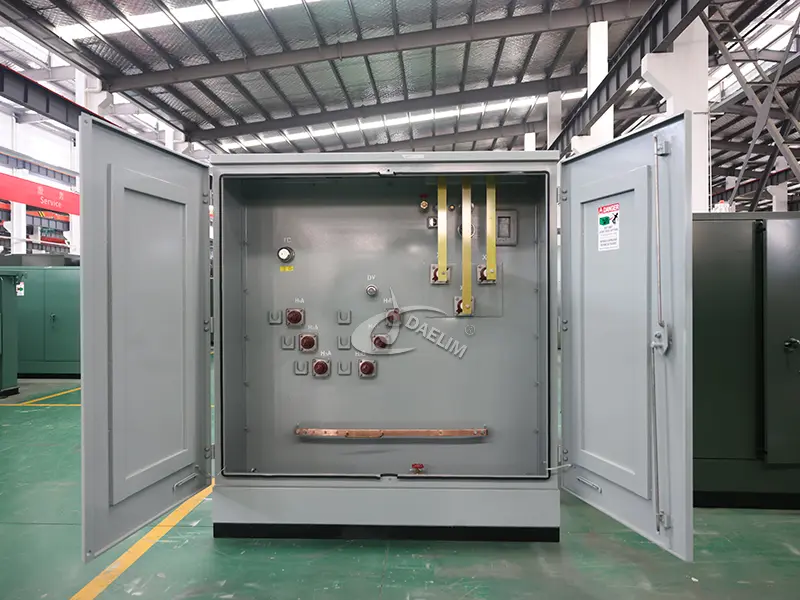 As voltage can fluctuate in either direction it can fluctuate above the average voltage requirement and it can fluctuate below the average voltage requirement. Based on that there are three types of voltage regulation in electrical Transformers.
As voltage can fluctuate in either direction it can fluctuate above the average voltage requirement and it can fluctuate below the average voltage requirement. Based on that there are three types of voltage regulation in electrical Transformers.
Zero Voltage Regulation of Transformer
The zero voltage regulation of a transformer is the most common and the most basic type of voltage regulation that occurs during the normal operations of electrical. In zero voltage regulation there is basically no voltage fluctuation observed on the Transformer output. This means that the on load voltage of the Electrical Transformer is the same as the off load condition.
In more simple words we can say that when there was an electrical load attached to the Electrical Transformer and the Transformer was switched on Load condition there was no significant increase or decrease in the voltage of the transformer as compared to its load condition.
This is a perfect condition for the Electrical Transformer because this means that the transformer is working perfectly and maintaining and delivering a stable voltage output. This type of transformer working is very important for sensitive applications where very sensitive electrical equipment is attached to the Electrical Transformer.
Positive Voltage Regulation
Just like this zero voltage regulation of Transformer the positive voltage regulation of a transformer is also a normal condition but it is not a common condition. In positive voltage regulation the output voltage of the Electrical Transformer drops slightly when any electrical load is attached to the Transformer as compared to its off Load voltage.
This slight decrease in the Transformer voltage is mostly due to the resistance and power losses of the transformer itself. All types of Electrical Transformer losses are responsible for this light drop in the voltage of the Electrical Transformer.
Negative Voltage Regulation
The negative voltage regulation is an unusual event and it does not occur normally but there are certain conditions and scenarios where the Transformer can experience negative voltage regulation. In negative voltage regulation is a case or scenario in which the output voltage of the transformer increases slightly when any external load is applied or attached to the Transformer as compared to the voltage off Load condition. In simple words, this means that the Electrical Transformer is providing more voltage than the equipment needs.
Get it free: Guide to Tap Changer in Pad Mounted Transformer
Working Mechanism of Voltage Regulation in a Transformer
How Transformer Tap Changers Adjust Voltage Levels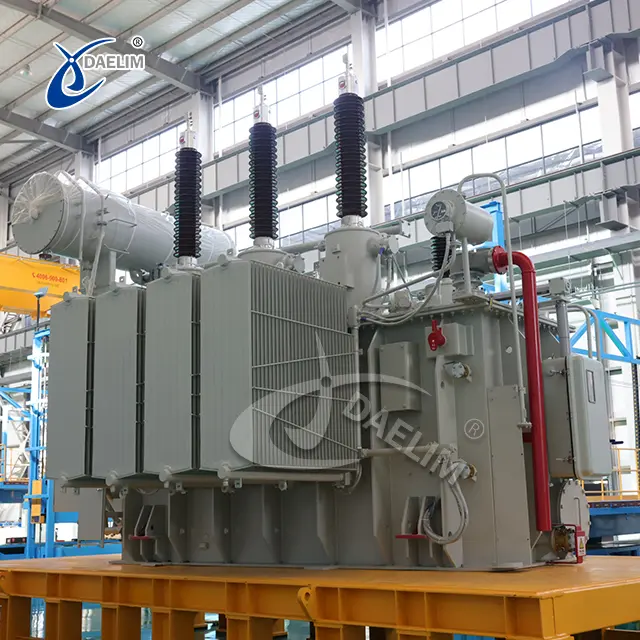
Voltage regulation of transformers is done through a transformer part called tap changer. Tap changer is not just a part, it's a complete mechanism that works to enable the transformer to deliver variable output voltage depending on the load or operating conditions.
The tap changer changes the number of turns of the transformer winding enabling it to deliver variable output voltage from a single winding and single input voltage. The tap changer ensures that the Transformer delivers variable voltage without compromising its operation.
There are two types of tap changer.
- The on load tap changer
- The off load tap changer
The on load tap changer is a type of tap changer that regulates the voltage output of an Electrical Transformer during its operations. The on load tap changer does not need the electrical transformer to be switched off or cut off from the power distribution system and then change the or regulate the voltage output rather it does it during the transformer operation and as needed by the current loading condition.
However the off load tap changer is a tap changer that can only regulate the Transformer output voltage before it is de-energized. Means that you need to cut off the input supply of the Electrical Transformer and wait till it is completely de-energized and then you can do the adjustment on the tap changer to change the output voltage or to regulate the output voltage of the electrical transformer.
Important here to know that the tap changer does not regulate the Transformer voltage on its own. It works to control or adjust the Transformer winding that in return then regulates or controls the output voltage of the Electrical Transformer. So tap changer working quality depends on the transformer turn ratio and transformer winding quality and reliability.
Learn more: Differences Between NLTC and OLTC Transformers
The Automatic voltage regulators (AVRs)
The automatic Voltage regulator is a part of Transformer voltage regulation systems that in most cases work in combination with the tap changer to enable Transformer automatically and frequently change the Transformer voltage as per the various and fluctuating load requirements.
One of the main features of the automatic voltage regulator is that it maintains the Transformer output voltage at a given point. It's an electronic device that continuously monitors and calculates the voltage that is delivered by the Transformer and that is needed at the electrical load. Then by comparing both voltages, the device calculates the difference between the provided voltage and the minimum voltage required by the electrical load or by these the device decides whether to send a signal to the tap changer of the Electrical Transformer or not.
As this device is called automatic voltage regulator means this device work continuously with the Electrical Transformer and continuously monitor the load requirement of the electrical load attached with the transformer and it continuously send signals to the tap changer specially the on load tap changer that can easily change the Transformer output voltage without interrupting or requirement of the energizing of the Electrical Transformer.
The automatic voltage regulator can also work with the off load tap changer because there are certain conditions or scenarios where the voltage is either too much or the requirement of the project needs you to de-energize the Electrical Transformer before changing the voltage output or do the voltage regulation activity on the Transformer. So this way automatic voltage regulators can work with both on load and off load tap changer.
How to Improve Voltage Regulation in Transformers
There are Several things that you can do to improve the voltage regulation of the transformer.
- First thing is to have quality Transformer parts specially automatic voltage regulating devices, tap charger, transformer winding and other associated sensors. Having quality parts in an electrical transformer ensures that the transformer operations their quality efficiency and reliability remains as per the standards. The quality voltage regulating parts will make sure that the transformer never Fails to respond to fluctuating voltage requirements.
- The proper tap changer setting is highly important for the Electrical Transformer to deliver safe and reliable electrical voltage that meets the demand of ever fluctuating load. Need to make sure that the tap changer is in perfect condition and has the optimal setting to minimise the stress on the electrical transformer.
- Another important thing that you can do to improve the electrical transformer voltage regulation ability is to have a Transformer design that is specifically developed to tackle the voltage fluctuation. There are certain standards that guide the Transformer designer to design the Transformer and its parts in a manner that they offer maximum reliability and offer resistance against fluctuation of load.
Conclusion
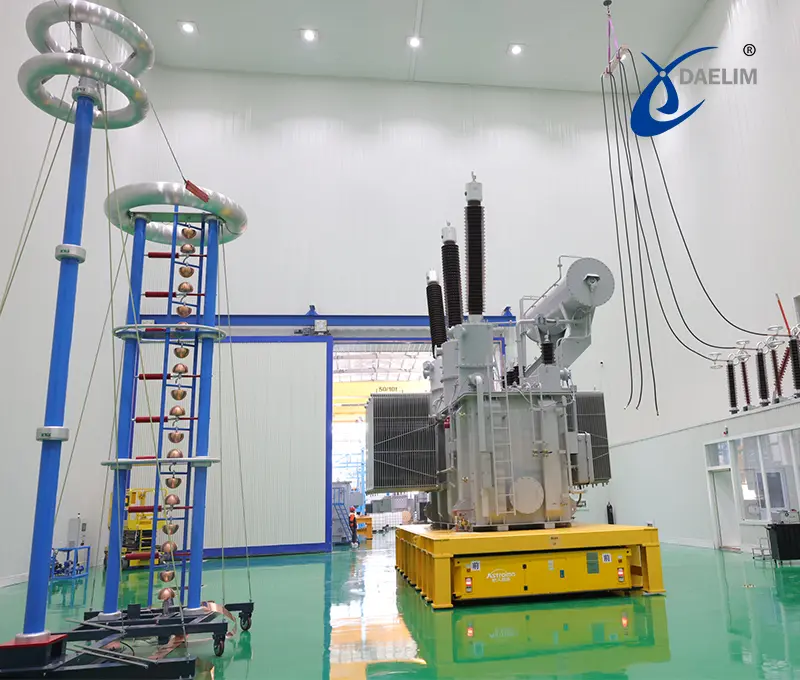 Voltage regulation of transformers is a very important feature as it is a vital process for delivery of safe, reliable, stable and efficient electricity to the attached load. A proper voltage regulation of the Transformer ensures that the electrical equipment attached with the Electrical Transformer will receive stable electricity. The proper voltage regulation of Transformer also ensures that there will be minimum power losses and also ensures power quality, that is why the international standards. Different Transformer parts like tap changer, automatic voltage regulators and other design features are very important in performing voltage regulation in electrical transformers.
Voltage regulation of transformers is a very important feature as it is a vital process for delivery of safe, reliable, stable and efficient electricity to the attached load. A proper voltage regulation of the Transformer ensures that the electrical equipment attached with the Electrical Transformer will receive stable electricity. The proper voltage regulation of Transformer also ensures that there will be minimum power losses and also ensures power quality, that is why the international standards. Different Transformer parts like tap changer, automatic voltage regulators and other design features are very important in performing voltage regulation in electrical transformers.
Follow Up
Transformer voltage regulation is a crucial aspect of any Electrical Transformer without which any standard Transformer cannot offer normal stable and efficient electricity. We at Daelim Transformer, offer Transformers of all types sizes and Power capacity that can ensure proper and perfect voltage regulation in transformers to their excellent design and build quality.
All our electrical transformers are designed and developed within compliance of international standards including but not limited to ANSI, IEEE, ISO, ASTM. If you have any questions regarding the electrical Transformers or the voltage regulation of electrical Transformers then you can contact us and our team of experts will lead you through the process.
Related Products
Related Article
Should Dry Type Transformers Be Installed Indoors or Outdoors?
This article compares indoor and outdoor dry type transformer installations, covering requirements, applications, ventilation, safety, and pros and cons. Indoor setups offer better protection and security but require more space and cooling. Outdoor installations save indoor space and reduce fire risks but need weatherproofing and enhanced security. Installation choice depends on environment, safety, and application needs.
A Complete Guide on Transformer FAT Test
Transformer FAT (Factory Acceptance Test) ensures that transformers meet design specifications and international standards for safe, reliable, and efficient operation. It includes inspections and electrical tests like resistance, insulation, and voltage tests. Performed by the manufacturer, client, and sometimes third-party, FAT helps prevent failures, reduce maintenance costs, and ensure long-term reliability.
Comparing Amorphous Core and Silicon Steel Core Transformers
Amorphous and silicon steel cores are key transformer materials. Amorphous cores offer lower core losses, higher efficiency, and are ideal for energy-efficient, eco-friendly applications, but are costly and fragile. Silicon steel cores are cheaper, durable, and suitable for high-power, mass applications, though with higher losses. Choice depends on efficiency needs versus cost considerations.
Guide to Common Industrial Transformer Voltages
Selecting the right industrial transformer voltage is crucial for equipment efficiency, safety, and energy loss reduction. Voltage must match machinery needs, regulatory standards, and allow for future expansion. Transformers are categorized into low, medium, and high voltage types based on application requirements in manufacturing, services, data centers, and power distribution systems.
Transformer Design & System Grounding (Wye vs Grounded Wye)
This article explains the importance of selecting the right transformer design and grounding method—focusing on grounded wye vs. ungrounded wye configurations. It highlights how proper grounding ensures safety, reliability, and efficiency in power distribution systems, providing an overview and comparison for engineers and technicians working with electrical transformers.
Transformer PCBs: Understanding Their Role, Risks, and Modern Alternatives
This article explores transformer PCBs (Polychlorinated Biphenyls), once widely used for their superior chemical properties. It explains their benefits, toxicity, and the environmental concerns that led to strict regulations and a shift toward safer, sustainable alternatives in the transformer industry. Readers will understand why PCB transformer oil is now largely phased out.

